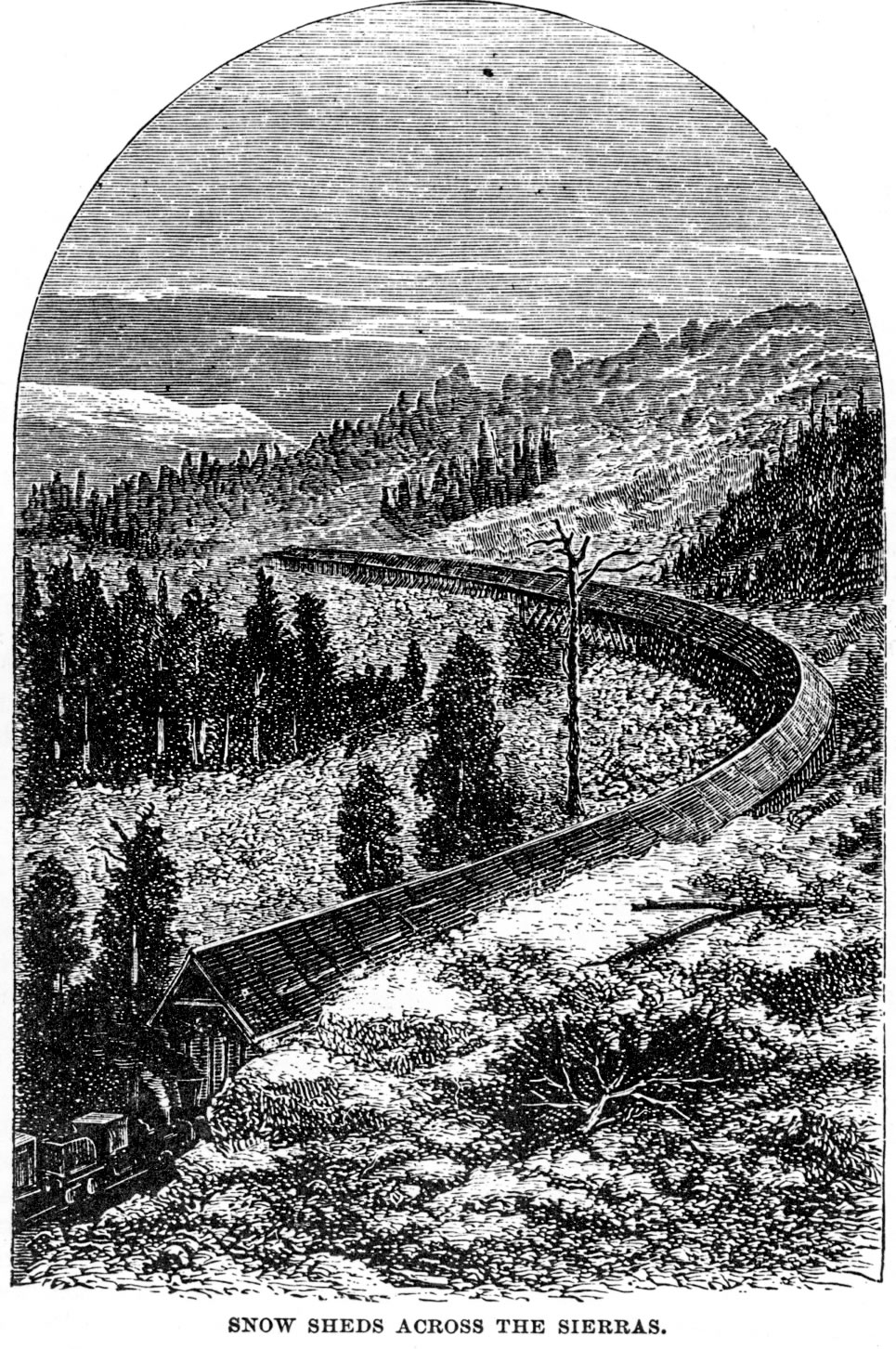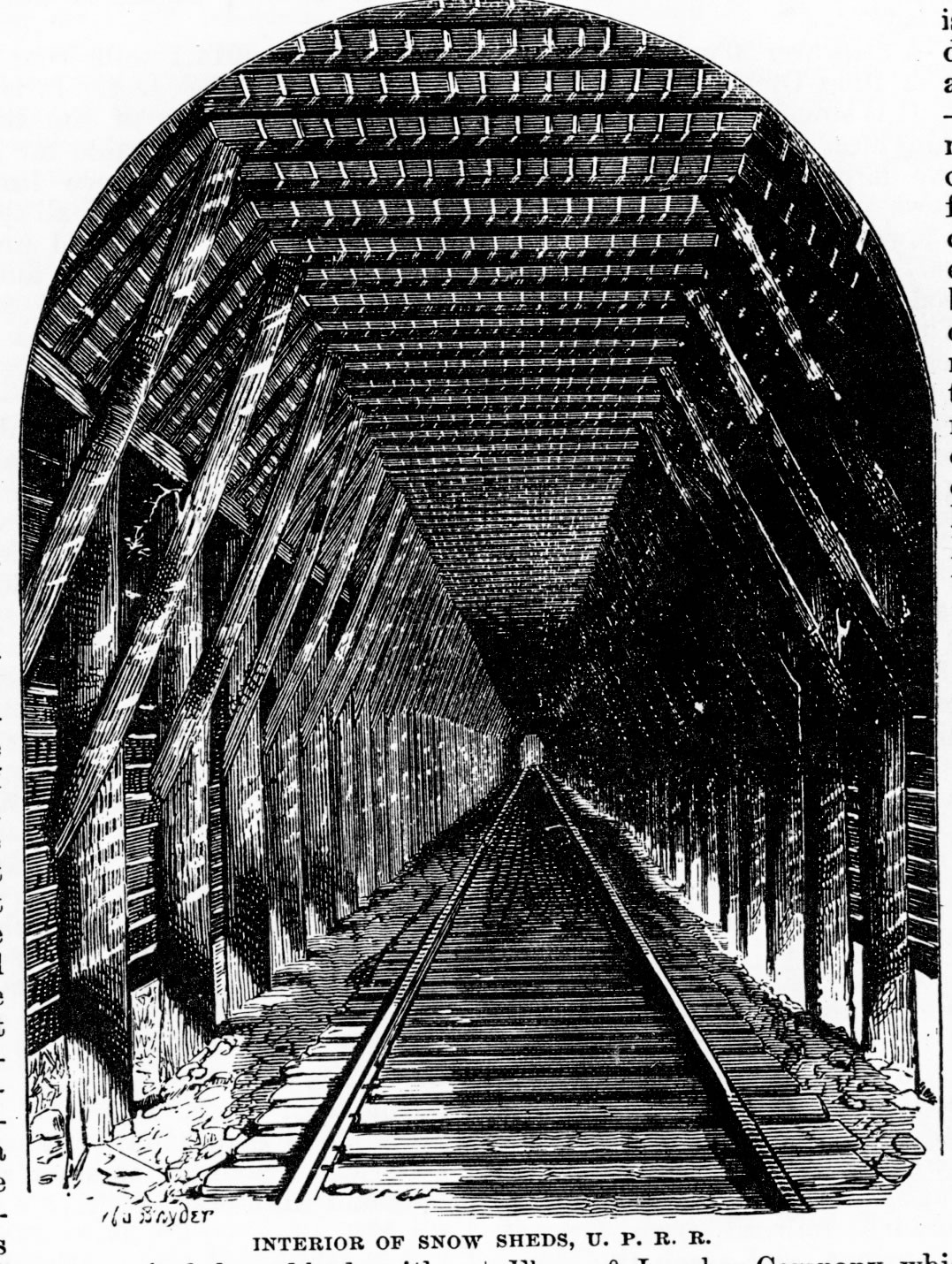The Pacific Tourist
Illustrated Trans-Continental Guide of Travel from the Atlantic to the Pacific Ocean
Reprint of the 1884 edition
378 pages
The book was originally written and developed by “forty celebrated artists, writers, explorers, and correspondents” Henry T. Williams, who compiled the information and supervised the book’s preparation, traveled for nine months gathering information and spending $20,000.
This is a travel book and best read as one travels across America in 1884. If you try to read it straight through in a couple of sittings it will get tedious as each stop on the railroad route is described one after another. It’s better in small doses especially when you get to Tahoe, Truckee and the Summit. Then you can savor it as your Palace Car travels over the Sierra. If you get the chance to travel by railroad across the country in 1884 this is the book for you.
“The grandest of American scenery borders the magnificent route of the Pacific railroads.” The Pacific Tourist describes it all and along with the scenery described is a slice of 19th Century life: train travel. That information and those hints will help with your travel. For example, upon switching to the Central Pacific in Ogden you have an hour so there is no need to rush.
“In no part of the world is travel made so easy and comfortable as on the Pacific Railroad. …. It is a constant delight, and to ladies and families it is accompanied with absolutely no fatigue or discomfort. One lives at home in the Palace Car with as much true enjoyment as in the home drawing-room… For an entire week or more, as the train leisurely crosses the Continent, the little section and berth allotted to you, so neat and clean, so nicely furnished and kept, becomes your home. Here you sit and read, play your games, indulge in social conversation and glee, and if fortunate enough to possess good company of friends to join you, the overland tour becomes an intense delight.”
 The description of the journey from New York to Chicago at 40 MPH is a bit tedious but after Chicago things begin to change. Travel is more luxurious and slower (20-30 MPH). There are little villages of prairie dogs to amuse everyone and there are good views. “… the tourist is full of glow and enthusiasm. He is alive with enjoyment, and yet can scarcely tell why.” We are interested in Donner Summit and crossing the Sierra, though, and so cannot spend much time here.
The description of the journey from New York to Chicago at 40 MPH is a bit tedious but after Chicago things begin to change. Travel is more luxurious and slower (20-30 MPH). There are little villages of prairie dogs to amuse everyone and there are good views. “… the tourist is full of glow and enthusiasm. He is alive with enjoyment, and yet can scarcely tell why.” We are interested in Donner Summit and crossing the Sierra, though, and so cannot spend much time here.
The book gives hints for train travel:
Take along a companion otherwise your traveling companions might not be agreeable.
Tip your porter a dollar – it’s worth it for his attention to things.
Food at the eating houses along the way is excellent. The usual price is $1.00.
Bring along a lunch basket for long stretches and delays.
The climate changes as you travel so have a variety of outfits and “always wear your underclothing.”
You get a 100 lb. baggage allowance.
Bring along books and papers “to while away your leisure hours.”
The cost of a berth from New York to Chicago is $5.00. From Chicago to Omaha it’s $5.00. From Omaha to Ogden, Utah its $8.00 and from Ogden to San Francisco it’s $6.00.
Meals can be had at railroad dining stations east of Omaha for 75 cents and meals on the UPRR and CPRR are $1.00.
At Omaha you switch to the Union Pacific Railroad and “will find one of the most magnificent trains of cars made up by any railroad in the United States. Everything connected with them is first-class.”
 There follows a description of towns along the route. For example where place names came from; the mileage along the route; little facts about the places on the line; and stories about things like prairie fires, Indian attacks, prairie hens, how buffalo robes are made, “Grand Duke Alexis’ First Buffalo”, the Pony Express, the telegraph, bullwackers, Indian battles, wildlife, gold discoveries, etc.
There follows a description of towns along the route. For example where place names came from; the mileage along the route; little facts about the places on the line; and stories about things like prairie fires, Indian attacks, prairie hens, how buffalo robes are made, “Grand Duke Alexis’ First Buffalo”, the Pony Express, the telegraph, bullwackers, Indian battles, wildlife, gold discoveries, etc.
Often there are little asides about what happened or curiosities along the route: a railroad bridge that expands and contracts due to the heat and does the expanding and contracting on rollers, Independence Rock, a coal mine fire, the Chinese (“emphatically a peculiar people, renowned for their industry and economy” followed by a rendition of their “peculiarities” even though “a repetition of them to any great extent is not needed here.”)
There is even advice for those going west for health reasons, “A Word with Invalids.” Do not wait too long to go west. Likewise don’t go too far and don’t go too fast.
Along with the text describing points of interest and other points, there are lots of pen and ink illustrations of the west.
The detail along the way sets the stage for arriving at Donner Summit. What will they say?
At Ogden you transfer to the Central Pacific and you have an hour to take a meal and switch baggage. Here is also a digression about visiting Yellowstone.
There is the history of the Central Pacific (as well as a lot of information about other railroad companies across the continent). It’s interesting to see the mileage of track laid during CPRR construction: 20 miles in 1863, 20 miles in 1864, 20 miles in 1865, 30 miles in 1866, 46 miles in 1867, 364 miles in 1868, and 191 miles up to completion in May, 1869. You really see the difficulty of getting started and crossing the Sierra.
Getting close to Donner Summit there is a good description of Lake Tahoe: 3,000 feet deep with visibility down 80 feet. There are five steamers plying the waters. Glenbrook in 1884 is acommercial center and temperance town. It will cost $20 a week to stay at the Lakeshore House Hotel in Glenbrook or at McKinney’s Cottages (west shore 8 miles from Tahoe City.)
At Tahoe City the Grand Central Hotel is the largest hotel on Lake Tahoe accommodating 160 guest at $3-$4 a day depending on board options. There is a trout farm in Tahoe City and another half way to Truckee where you can fish paying for what you catch.
Truckee is the “seat of a large lumber trade” but which “would be benefited by the establishment of an extensive fire insurance business.” The town was burned in 1868, 1869, twice in 1870, in 1874, and ‘ChinaTown’ in 1875.” You would think that wide streets are for preventing the spread of fire but “in winter the more probable suggestion is that it is for the convenience of piling up the snow when the people shovel out their houses.”
One of the asides after Truckee is “Starvation Camp” which is a story about the Donner Party.
By page 242 you reach the summit. First you go through Coldstream, “The fine view on the eastern side of the Sierras not shut out by snow sheds from the traveler by rail.” Just before entering the sheds “a long line of purple pyramids and jagged precipices surround the valley, and if the road is not at the bottom of everything, the enormous face of the mountain seems to forbid the most daring attempt to ascend. But upward – still looking back to the valley of the Truckee far below…”
There’s a day and night telegraph station at Summit so you can send messages if you need. It is the highest point on the road surrounded by peaks two and three thousand feet higher. Summit House is the largest hotel along the line accommodating 150 guests, “and is one of the most popular in the Sierras.”
“One who lets the train go by, to climb to the top of the ridge through which the tunnel leads, or some higher peak, will never be sorry, for an entrancing panorama will be unrolled.”
Summit Valley is bright with pastures and “warm with life.” “Devil’s Peak, … a bold cliff rising out of wild surrounding; and following the ridge eastward with the eye, and around toward the point of vision, there are Old Man’s Peak, … Mount Lincoln, Donner Peak,” “Then there are a thousand other charms… in contrasts of light and shade, form and color; in mists hanging over the [Donner] lake, and clouds clinging to peaks; in the twilight deepening in darkness, or colossal pyres, kindled by the coming of sun, and going out in the clear light of the day; or, in the gloom of the forest mingled with the living silver of the moonlit lake.” Even “persons of feeble constitution may enjoy all the varied charms” of the summit.
At Soda Springs Station “Stages run to the “highly medicinal springs” and “the ride is not surpassed, if equaled, by any in the Sierras north of Yosemite, in the number and beauty of the fine views it affords.” The hotel at the springs “is not an imposing structure, but it is kept in first-class style and is a favorite resort.”
The train ride from the summit down passes “great ridges and canons… their extent alone impresses the beholder with awe, but the snow sheds allow no satisfactory view.”
Each little railway stop on the route over the summit is described: Strong’s Canon, Summit, Summit Valley, Soda Springs Station, Cascade, Tamarack, and Cisco.
Then there are all the stops on the way to San Francisco where the city is described including “cable-roads” (cable cars) and all the things to do there.
Toward the end there is a chapter on the Chinese and here another kind of history presents itself, the prejudices of the 19th Century: “These queer looking people, with loose garments, umbrellas hats... and dangling pig-tails, are the hated of the Paddy, the target of hoodlums; the field of the missionary, the bomb for the politician to explore, and the sinew for capital. They are called the essence of all that is vicious, villainous, and certainly are opinionated. They are everywhere; even the boys say they cannot throw stones without hitting them.” [sic] There follows ten pages about the Chinese: appearance, characteristics both good and bad, religion, food, etc. Unaccountably at the end of the chapter are ten pages aimed at those staying in the west. There are descriptions of Yosemite, Big Trees, the Geysers, Shasta, Los Angeles, etc. so one can have lots to do.
This book is available in some libraries in the original or on the Internet for the 1970 reprint.

